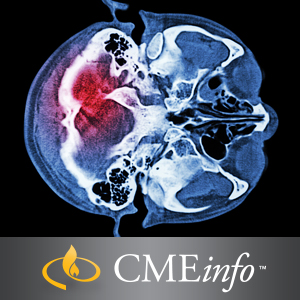-97%
Unraveling the Art of Emergency Imaging: A Comprehensive Guide to UW’s Clinical Update
UW Emergency Radiology Review: Empowering Radiological Excellence in Urgent Scenarios
The University of Washington’s esteemed Emergency Radiology Review is meticulously crafted to provide radiologists with the knowledge and agility to make informed imaging decisions in emergency situations. Led by an illustrious panel of experts from the renowned University of Washington School of Medicine, this clinical update strives to equip radiologists with the expertise to seamlessly navigate the complexities of emergent care.
Mastering Imaging Strategies: A Comprehensive Approach
This meticulously structured program encompasses a comprehensive spectrum of topics, focusing on the most prevalent traumas by anatomical region. Participants will delve into the nuances of imaging techniques, pitfalls to avoid, and the implementation of protocols that maximize diagnostic accuracy. The lectures will equip attendees with an integrated approach to imaging injuries of the head, neck, spine, torso, pelvis, and appendicular skeleton.
Enhance Decision-Making with Precision
Through this in-depth review, radiologists will refine their skills in rapidly identifying the appropriate imaging modalities for specific scenarios. They will gain familiarity with uncommon clinical conditions that manifest in emergency settings and acquire the knowledge to optimize imaging protocols for enhanced diagnostic accuracy while minimizing unnecessary radiation exposure.
Expert Insights into Diverse Emergencies
The roster of esteemed speakers encompasses a wide range of specialties, offering unparalleled insights into emergency conditions. Their expertise spans:
- Penetrating Chest Trauma: Jeffrey Robinson, MD, MBA
- Blunt Chest Trauma: Rachael Edwards, MD
- Updated Guidance on Incidental Pulmonary Nodules: Christopher Walker, MD
- Acute Aortic Syndrome with Focus on Intramural Hematoma: Christopher Walker, MD
- Imaging of Liver Injuries: Scott Steenburg, MD
- Imaging of Splenic Injuries: Scott Steenburg, MD
- Bariatric and Other Post-Operative Bowel Emergencies: David Coy, MD, PhD
- Blunt Cerebrovascular Injury: Aaron Rutman, MD
- Neck Infections: Kathleen Fink, MD
- Acute Traumatic Brain Injury: James Fink, MD
- Hip and Femur Trauma: Claire Sandstrom, MD
- Knee Trauma: Jonathan Medverd, MD
- Multiligamentous Injuries of the Knee: Jack Porrino, MD
- Foot and Ankle Trauma: Felix Chew, MD
- Cardiac CT with Focus on CCTA: Faisal Khosa, MD
- Practical Approach to Chronic Lung Disease: Jonathan Chung, MD
- Uniquely Pediatric Knee Injuries: Mahesh Thapa, MD
- Traumatic Aortic Injury with Focus on MAI: Scott Steenburg, MD
- CTA of Peripheral Vascular Injuries: Scott Steenburg, MD
- Imaging of Gunshot Wounds: Noah Ditkofsky, MD
- Rational Headache Work up in the ED: Christopher Potter, MD
- Rational Stroke Work up in the ED: Douglas Seiler, MD
- Maxillofacial Trauma: Jayson Benjert, DO
- Spine Trauma: Nathan Cross, MD
- Pediatric Abusive Head and Spine Trauma: Jason Wright, MD
- Orbital Imaging in the ED: Francisco Perez, MD, PhD
- Pediatric GI Emergencies: Elizabeth Tang, MD
- Mass Casualty Imaging: Eric Roberge, MD
- Essentials of Abdominal and Pelvic Trauma: Joel Gross, MD, MS
- Upper Extremity Trauma: Claire Sandstrom, MD
- Pelvic Ring Trauma: Ken Linnau, MD, MS
- Biomechanics of Trauma: Gregor Dunham, MD
- Pattern Recognition: Mechanism-Based Injury Combinations: Shaimaa Fadl, MD
- Pediatric Upper Extremity Emergencies: Ramesh Iyer, MD
- Pediatric Lower Extremity Emergencies: Anh-Vu Ngo, MD
- Pediatric Chest Emergencies: Jeffrey Otjen, MD
- Dental Emergencies: Johan Aps, MD
- Interesting Cases from the Trauma Center: Scott Steenburg, MD
- Radiation Exposure: What Do Clinicians Want to Know? Jeffrey Robinson, MD, MBA
Learning Objectives: Enhancing Clinical Proficiency
Upon completion of this activity, participants will emerge with a refined ability to:
- Swiftly identify and select appropriate imaging studies for various scenarios
- Expand their knowledge of uncommon clinical conditions encountered in emergency settings
- Modify imaging protocols to optimize diagnostic accuracy while minimizing radiation exposure
- Expertly interpret emergency imaging studies and discern when further imaging is warranted
Intended Audience: A Multidisciplinary Approach
This educational endeavor is meticulously designed for radiologists, including residents, fellows, and practicing radiologists, as well as imaging technologists. Additionally, other medical professionals, such as physician assistants, nurse practitioners, and MDs working in emergency departments, will find the imaging approach and interpretation highly valuable.










Reviews
Clear filtersThere are no reviews yet.